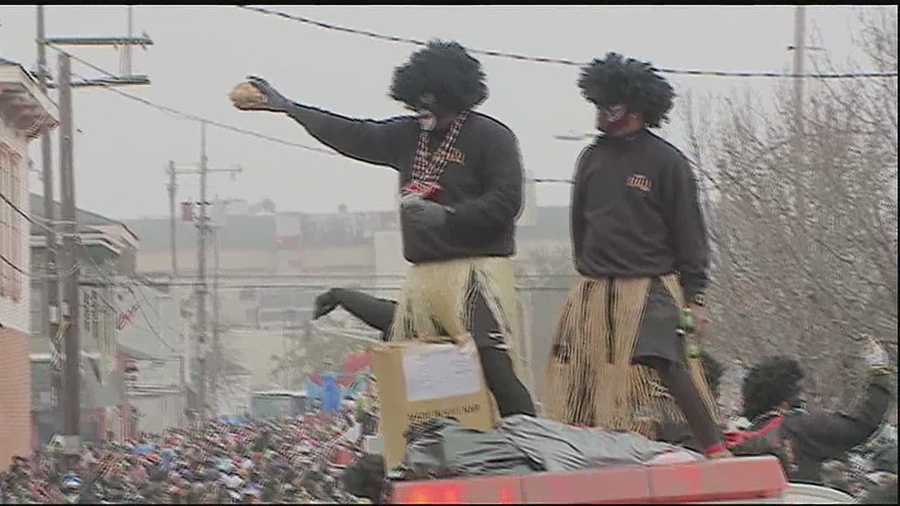Zulu coconuts have quite the storied history
One thing that is synonymous with the Zulu parade is the Zulu coconut. The coveted Mardi Gras throw is something everyone wants to walk away with.
Riders load hundreds of coconuts onto floats ahead of the parade Mardi Gras morning. However, one year every reveler walked away without a decorated coconut.
History shows Zulu introduced the "golden nuggets" as they're known in the early 1900s, but in the not-so-distant history, one year not a single coconut was thrown to the crowds.
Of all the throws to rain down on Mardi Gras, the Zulu coconut is of highest demand. The coconut made its debut in 1910 in a dulled-down form, natural and hairy with no gold or glitter.
Zulu historian Emeritus Clarence Becknell explained, "The coconut came because they couldn't afford to buy the beads, so a guy by the name of Lloyd Lucas, and some others, they went into the French Market and they purchased a sack of coconuts and that was the throw."
That was all they threw in the beginning. The coconut eventually evolved to look more like those we see today, but they were much more labor intensive to create.
Thomas Price, a Zulu Social Aid and Pleasure Club Member, said, "In past years we used to use these coconuts in the raw form, the hairy form, and if you can notice they make like a little natural face, so we took like a sharp object and we'd open the mouth out and we'd shake the milk out."
Then the hair was shaved off and they were decorated. The coconut took a blow in 1987 after lawsuits from people claiming they were injured by thrown coconuts. Zulu couldn't get insured that year, thus the time-honored tradition went away.
Price recalled, "It was really a different vibe. Guys like Clarence did little colored walnuts, but most people tried to find something else. I had T-shirts and stuff I gave off the float, but it was different everybody kept asking for coconuts. Everybody wasn't aware that because of insurance woes we didn't have coconuts that year."
After the state legislature passed the "Coconut Bill" to clear the club from liability for alleged injuries, the coconut came back but still more changes were needed to ensure safety.
"About seven to eight years ago no coconuts were allowed on the top decks, and also instead of just draining them now it's just a shell, all the meat has been taken out," Becknell said.
Riders have come up with their own ingenious ways to make the decorating process more efficient. For Instance, Price said, "I've got what I call assembly line coconuts. They kind of all take the same form, a little tweak here and there."
Deciding who gets a "golden nugget" is the next big task. Price said, "When we get around Lee Circle, a lot of times there’s some of the older people in wheelchairs and I'll send some to those people, and you see their faces light up and it makes all the work worth it."
These days the riders all buy sacks of coconuts from a vendor which shaves, cores and empties them, then a coat of paint is added. Each rider typically gets between 100 and 200 coconuts to decorate and throw.
Download the WDSU Parade Tracker for iPhone and Android smartphones!
Click here to download for iPhones
Click here to download for Android
Sign up for our email newsletters to get breaking news right in your inbox. Click here to sign up!


